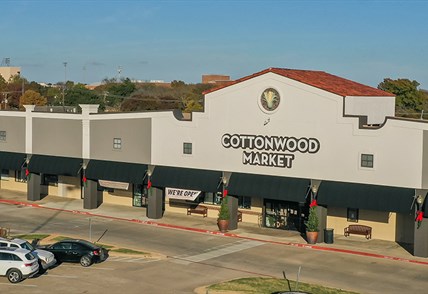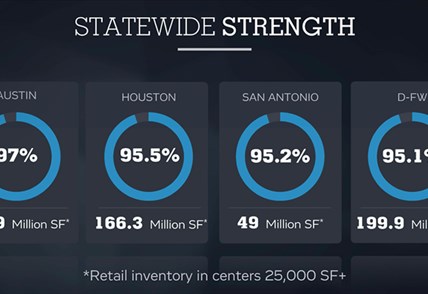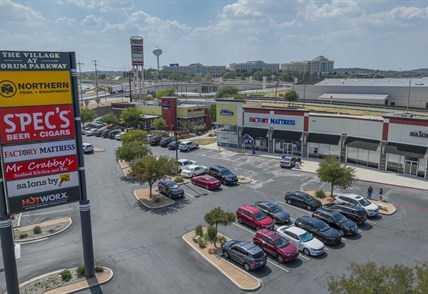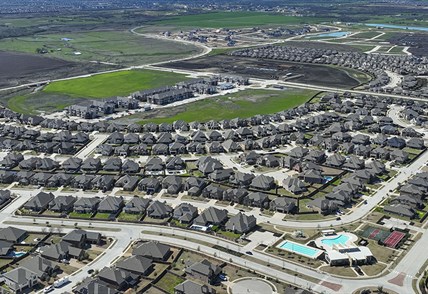The major Texas cities are reporting some of their strongest economic performances ever. Overall, Texas retail markets report some of their highest occupancies ever. In previous cycles, these two factors would have led to a big jump in retail construction.
But all of our major urban areas have seen a prolonged period of slow construction, and based on our projections for new space in 2019, Austin, Dallas-Fort Worth, and Houston will see new space deliveries decline again this year. San Antonio is seeing construction increase, but even so, the deliveries of new space in the Alamo City remain very conservative.
Here are some of the key reasons for the constrained market for new space.
Nationwide, a retail contraction means a decline in brick-and-mortar anchor expansions, since anchors like grocery stores or Target stores serve as the catalyst for large retail projects.
Even healthy retail anchors are reducing their new store count as they put investments into multiple platforms, not just brick-and-mortar.
A lot of demand today comes from restaurants, services, boutique fitness, beauty and health, medical and dental, etc. These are typically not large retailers, and if they do justify new construction, it results in smaller strip centers.
Of course, no new malls. Twenty years ago, a new mall meant a single project that could add 1.5 million square feet, and peripheral retail meant that 2 million square feet or more could open at a single intersection during a single year.
Retail construction peaked during the era of the malls. In addition, the power-retail explosion of the ‘90s meant that big power retailers (Bed Bath & Beyond, Best Buy, Circuit City) could add two or more locations to a market in a single year.
Another is the lack of speculative space – 20 years ago, there would be a 50,000-square-foot anchor with added spec small-shop space and agents would work to lease it up. Now, you might have no small-shop space or very limited shop space.
In addition, the current cycle represents projects that come online in phases – so a project might be planned for 150,000 square feet, but it comes online is smaller phases over a couple of years or more.
Many retailers are shrinking their sizes. For example, a Target store set to open in East Austin’s Saltillo project in 2020 is only about 25,000 square feet. Not that long ago, a typical Target could reach 80,000-125,000 square feet.
Additionally, the failure of legacy retailers like Toys “R” Us and Sears, among others, created well-located vacancies for expanding concepts to backfill. These backfills add to occupancy but not to new space.
The four major Texas markets are projected to continue having extremely conservative construction, even for markets with healthy occupancy and strong economies.
Austin
95.4 % occupancy – healthiest of any major metro retail market in Texas
50.1 million square feet of inventory
Projected 2019 construction of 610,000 square feet – on par with the past few years
DFW
92.6 % occupancy – tied with the highest on record
200.3 million square feet of inventory
Projected 2019 construction of 1.7 million square feet – that would be half of the 2018 total of 3.5 million square feet (Dallas is getting a new Costco, but it’s going into a vacant Sam’s Club. New retail, but no new space)
Houston
94 % occupancy – one of the healthiest totals ever
162 million square feet of inventory
Projected 2019 construction of 1.3 million square feet of new space – down by half from 2.7 million square feet in 2018
San Antonio
94.2 % occupancy – very healthy
47.1 million square feet of inventory
Projected 2019 construction of 910,000 square feet – way up from 275,000 square feet in 2018. (Seems like a significant increase, but it’s still under 1 million square feet, and IKEA accounted for almost a 1/3 of the projected total.)




